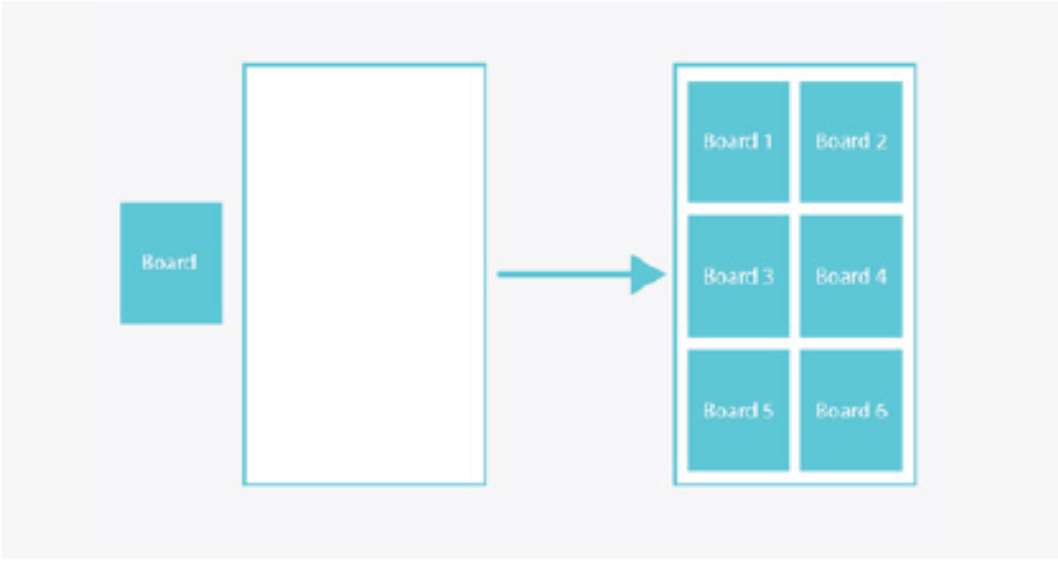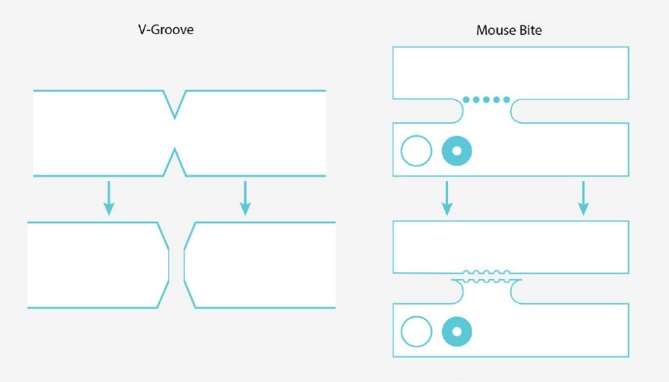To Panelize or Not to Panelize
The majority of board manufacturers create boards in large panels. These panels can include different designs or simply one design repeated many times. Depending on the end client’s requirement, manufacturers can cut the panels into individual boards. You can either let the board house panelize the boards or do it yours. Either way, if a design is going to be mass produced and assembled panelizing boards is a good idea. While the basic principle is that of playing Tetris with your boards, there are several variables to think about when deciding whether or not to panelize and how best to implement it.
One of the biggest potential benefits for panelizing boards is the cost savings. If you provide a panelized design, you eliminate the costs some manufacturers charge for panelizing the boards. It is possible to change the board design to better use the space on the panel, although this is likely to be very difficult due to other design constraints. Fortunately, there are also cost savings in the ease of dealing with a large panel of boards instead of each one individually.
When it comes to assembly boards in the thousands (up to hundreds of thousands), the process will be highly automated. Pick-and-place machines take time to switch between boards and to align the boards with their global fiducials. By reducing the frequency in which the pick-and-place needs to switch out boards, you shorten the assembly time, which is usually reflected in a lower assembly price. Populating the board is a sizable bottleneck in assembly, but it is possible that the panels may also reduce the setup and queueing time for the reflow process. When the boards are complete, test fixtures can be built to test entire panels at a time instead of individual boards, again saving time. Once the panels have been completely populated, soldered, and tested, they can be broken into individual pieces or shipped in panels.

Panelizing is not for all situations and sometimes when it is better to panelize, there are additional headaches to consider. Shipping hundreds of small boards is relatively easy and inexpensive. Panels, on the other hand, are usually large enough to make shipping more challenging and, for panels WHERE pallets are necessary, shipping options are even more limited. Assembly houses also have different capabilities, which determine how large of boards they can handle with different pieces of equipment. Not only must the panels be able to fit into the pick-and-place machines, they must be able to go through the reflow ovens. For conveyor style reflow ovens, only the width is the limiting factor, but even some commercial reflow ovens are batch-oriented, placing boards in, soldering them, and then pulling them out. Depending on the surface space, the assembly house may need to separate portions of the panels to fit them in the batch process. Finally, though testing many boards at the same time is more efficient, it also means a larger, more expensive and complex test fixture. In all of the processes, there may be concerns with warping, drift, and flexing of the panels. Despite these potential issues, the size of the panels typically does not pose problems and the inconveniences are usually worth the savings.
When the manufacturers separate the boards from the panels, they usually do so by routing out the boards individually. If they ship the entire panel, it is up to the end user to separate the boards. Unless there has been some proper planning, this can be extremely difficult, requiring custom cutting or drilling that may look unprofessional. Fortunately, no reputable board manufacturer will send out panels of boards without working with the customer to make sure the individual boards can be broken out.
There are two different methods for popping boards. These different ways are chosen purely on what is best for the individual design and its requirements. Mouse bites, named because of the way the connection points look after the board is broken out of the panel, is an excellent option when portions of the board need to have smooth, unbroken edges, and other portions do not. The other very common option for breaking out panels is V-scores. Instead of routing the outline of the board, a shallow v-shaped groove is made on the top and the bottom of the board, creating a weak edge that can be snapped out of the panel.

To determine the correct separation method for your board consider how the boards will physically processed. For example, while it may seem straightforward to put the designs directly next to each other, there needs to be a small area set aside for the size of the routing tip. This is entirely dependent on the manufacturer, so either read through their literature or contact them to find out how much space you must give for the routing tip. V-scores as well can be different widths and angles, so work with your manufacturer to figure out what works best. If there are components that will hang over the edge of the board, you also need to give those components sufficient space to be placed on the board without covering a portion of the adjacent board.
These concepts cover some of the more basic concepts and uses of panels. However, the more experienced you are in dealing with panels, the more creative you can be. For populating double-sided boards, panels can be made with boards of alternating sides so that the boards will go through the pick-and-place once, soldered, flipped over, and run through the exact same program on the machine before being soldered once again. This method, while a bit tricky, reduces the overhead of needing to switch out programs on the pick-and-place machine for the different sides of the boards. The surface tension of the solder holds the components on the bottom side of the board in place while the other side is being reflowed. Board manufacturers and assembly houses both want your designs to be successful, so work with them if you have a unique situation that needs additional support. If they are not willing to work with you, it may be a good indicator you should look for a different partner.
Panelizing boards is a significant portion of the Design-for-Assembly process, and when done properly, can make a sizeable difference in the cost, the ease of assembly, and the success of the product. Your first attempts may not be perfect but, as with all things in life and engineering, document your mistakes and make sure you do not make them again. In the long run, these techniques will become second nature and simply another step in the design process for creating a high quality, cost-effective product.
Capabilities
Payment Methods
Specials Price
Carriers
Support Hobbyist
Certificate
Customer Support
Follow Us
Tel: 1-905-339-2881
Email: sales@goldphoenixpcb.com , tech@goldphoenixpcb.com
Copyright Gold Phoenix PCB Co., Ltd. 2011 - 2025
Tel: 1-905-339-2881 Email: sales@goldphoenixpcb.com , tech@goldphoenixpcb.com
Quality Control System
|
Products/Service
|
Friendly Links
Copyright Gold Phoenix PCB Co., Ltd. 2011 - 2025


